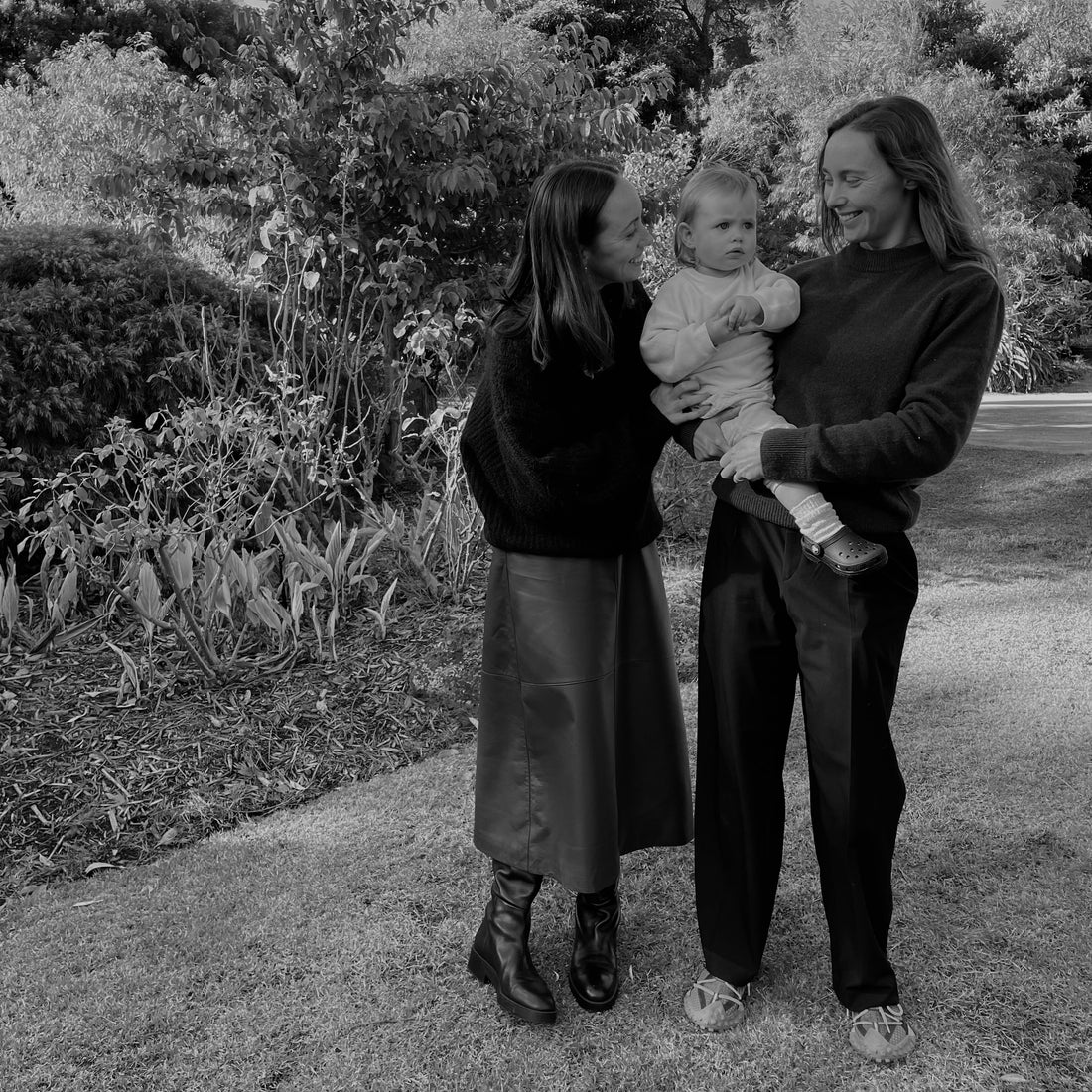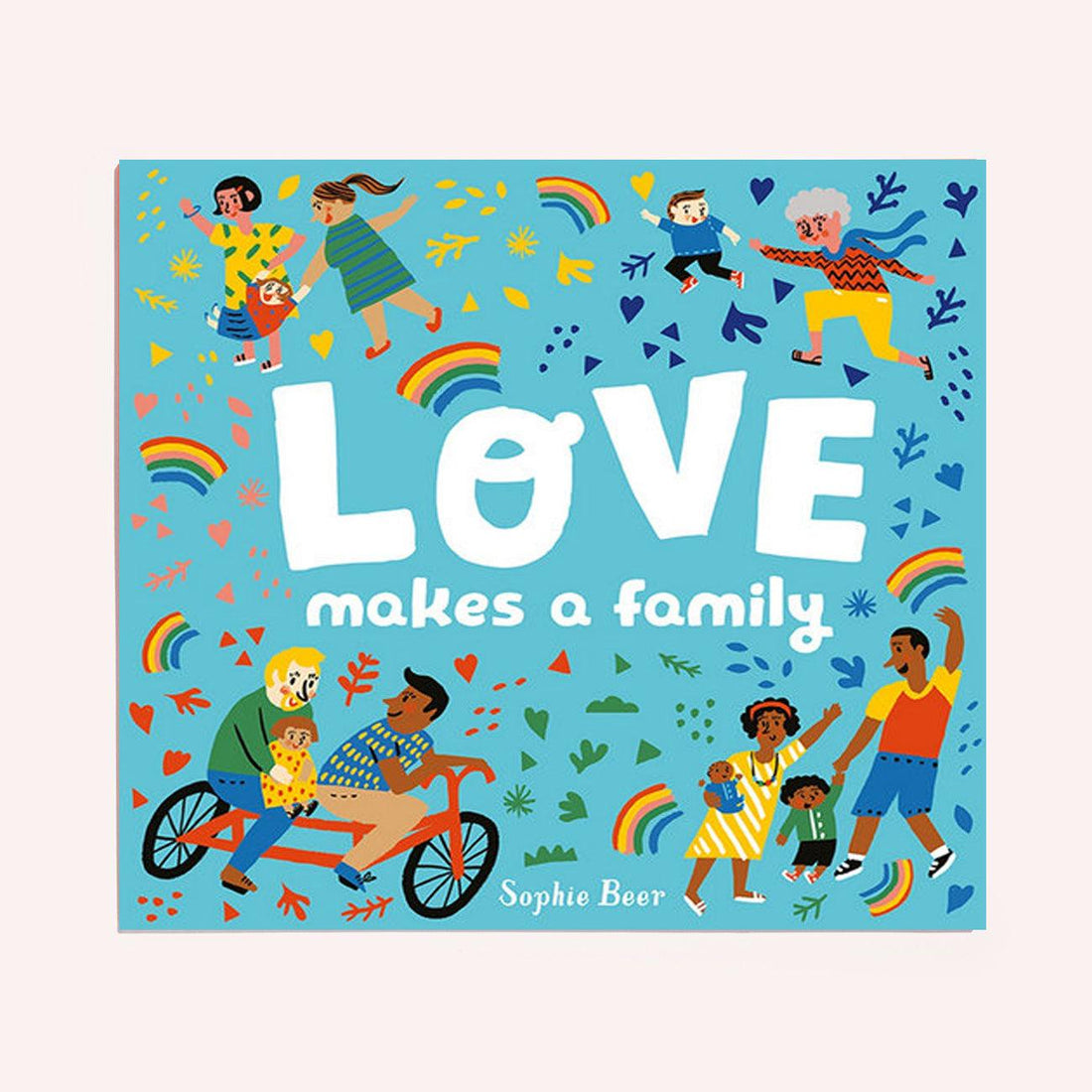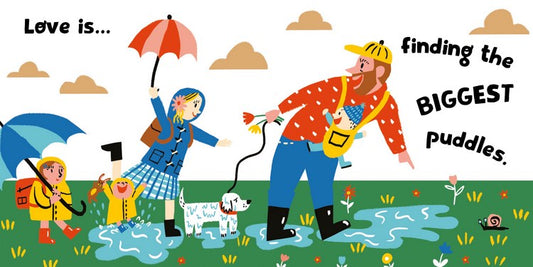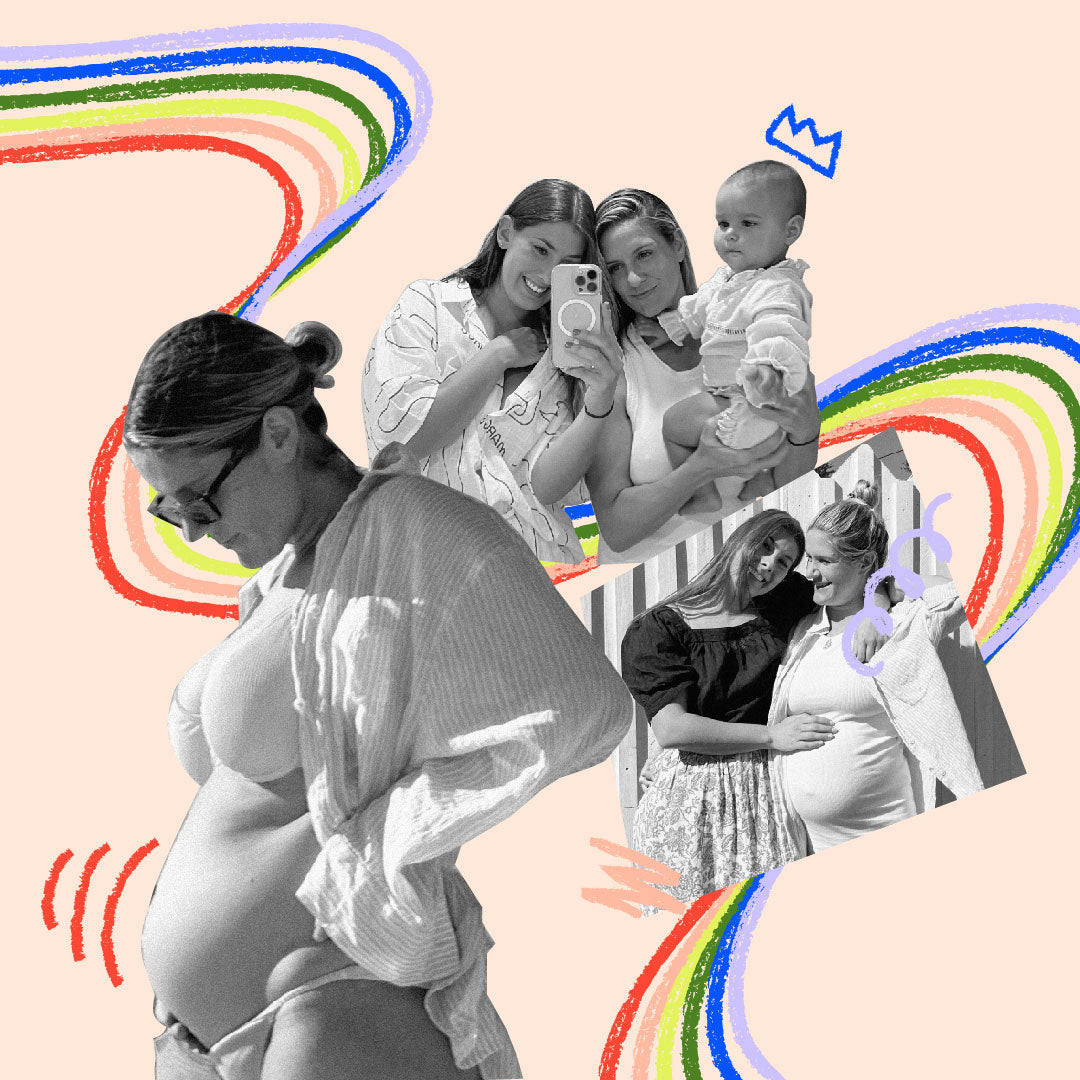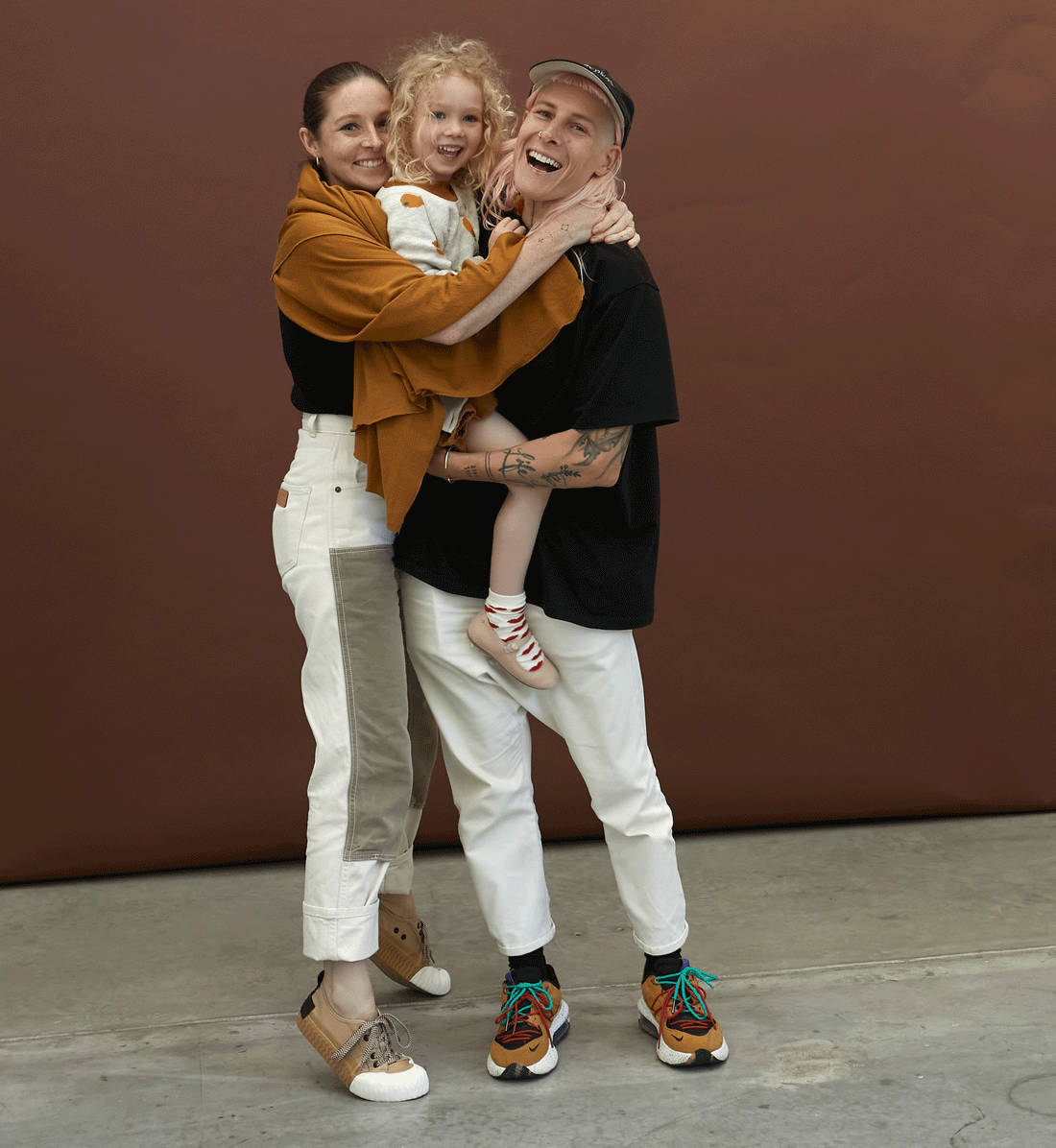The conversations to start now, and continue in the future.
When we sat down to discuss how we at The Memo could support LGBTQIA+ families, not just in Pride Month, but in an ongoing and meaningful way, there were a few things that kept coming up: the first was visibility. Tell the stories — and show queer families in our stories, in our photos, in life. And the second was support. Not only for same-sex couples wanting to start a family, but for the wider community who want to know how to respectfully support and raise their own kids to be allies too. This is one of those stories. And because we are not the experts in this space, we reached out to someone in our own community to help guide these conversations. Here, Lauren Trend, Queer Parent and Founder of Self Practice, shares the conversations she’s having — and that we should all be having — to be a supportive ally in this space.
Conversations… with a counsellor
Sadly, but also probably not surprisingly, there really wasn't too much support offered to us prior to us starting a family. In many ways we were left to figure it out for ourselves — both to do with where to start, and then on becoming a two-mum family.
We landed on our personal approach through our own research, having honest and open conversations with one another and by reaching out to peers within our community that had gone through the family planning process. We also had to undergo counselling, which was mandated at the time, as we opted to employ the support of a fertility clinic to conceive. Whilst that mandated requirement was initially quite jarring, we walked away with some practical tips and tools from our therapist, and ended up finding the process quite helpful in regards to talking through our approach, asking questions, and discerning the legal framework that would support our family structure. Our therapist was a real advocate for us, and that support meant a lot. I suppose the reality of parenthood is that at every stage, we’ll be having and need to have different conversations, with each other, and our children. And it’s our responsibility as parents to always be open to that conversation and its evolution, and to create an environment within which our children know that their story, although unique, is most importantly one of love.
“The reality of parenthood is that at every stage, we’ll be having and need to have different conversations, with each other, and our children. And it’s our responsibility as parents to always be open to that conversation and its evolution, and to create an environment within which our children know that their story, although unique, is most importantly one of love.”
Conversations… with each other
There are so many ways to create a family in this space, so something that was incredibly important to us was to establish, and keep, lines of communication in our relationship open — from family planning, and what was important to us when it came to choosing a donor, all the way through to preconception, pregnancy, postpartum, and now, into early childhood and beyond.
Thankfully, my partner Lucy and I have always been on the same page as far as our approach to creating, growing and caring for our family is concerned. However, something we’ve also put into practice is hypothetically exploring other paths, to ensure we’re confident (and united) in our approach. By doing this, we were better able to discern our boundaries as we could identify things that didn’t sit well with us — in relation to choosing a donor, or how we might go about explaining decisions we made in communication with our children as they grow up, for example.
Conversations… with your child
Mila’s only just turned 18 months, so in many ways, these conversations lay ahead of us. As parents, Lucy and I feel confident in our unified approach that, within our home, no question is off limits. We want our children to feel as though they can come to us and ask us anything, at any age, and will always approach their curiosity with honest and respectful discourse that’s appropriate for their age at the time. Naturally, as our children grow, these conversations will grow and evolve too. And as parents, we’re willing to give ourselves permission and grace to not feel like we need to have immediate answers for them, all the time. That might look like mindfully responding to a question that caught us off guard: “You know what darling, I’m not sure how to answer that at the moment, but I’d love to come back to you once I’ve had a chance to think about it - would that be OK?” As this models a positive example that encourages us all - children and adults - to be curious, whilst continuously learning and evolving.
Conversations… with strangers
As a same-sex parent family, we’re acutely aware of the fact that our very existence often comes with a lot of external assumptions and oftentimes interrogation as we just go about our day.
While I strongly believe that representation matters, and that information sharing is the gateway to LGBTQIA+ freedom and safety, I don’t feel it’s always our role as same-sex parents (or members of the Queer community in general) to be the educator.
While our daughter is young, we as her mums are the ones to bear the burden of assumed knowledge or innocent (but oftentimes jarring and invasive) questions about our family structure. But there will one day come a time when our children will be the ones faced with these questions about their identity and story, or our family. It’s our responsibility as parents, to equip our children with a sense of pride and empowered knowledge whereby they can answer others’ questions (should they wish to), but also, and perhaps most importantly, confidently decline should they need to.
“While our daughter is young, we as her mums are the ones to bear the burden of assumed knowledge or innocent (but oftentimes jarring and invasive) questions about our family structure. But there will one day come a time when our children will be the ones faced with these questions about their identity and story, or our family.”
Lucy and I have experienced a number of jarring questions as we’ve just been going about our day, and in the heat of the moment when we’ve been completely caught off guard, we’ve felt quite ill-equipped to handle them at times. In unpacking these experiences together after the fact, we’ve come to our response that we feel comfortable modelling in front of our children as they grow up. When faced with an inappropriate question or offensive remark the formula we’ve landed on is:
- Assert a boundary.
- Correct an assumption.
- Connect them to a resource whereby they can learn more information.
But I will also add that this is where we really need the support and active allyship from our extended community. For our friends, family, colleagues, education and medical system to step up and continuously educate themselves, helping to share some of that burden, so it’s not always left to Queer people to fight that fight, and take on the role of the educator.
“As a same-sex parent family, we’re acutely aware of the fact that our very existence often comes with a lot of external assumptions and oftentimes interrogation as we just go about our day.”
Conversations… with families and friends
We’re incredibly fortunate that our families will pick up the phone and ask us if there’s something they’re unsure of. We’ll always give them our opinion, assert our boundaries or communicate what we feel comfortable with. We really encourage that level of open communication, and also feel confident in carefully correcting them if they’ve accidentally used the wrong terminology, or language that doesn’t align with our family dynamic.
The bottom line is: a lways, always ask the (LGBTQIA+) parents. And respond to any questions, in the way that they’d like you to. As same-sex parents, we’re having these conversations with each other, and mentally to our hypothetical future children long before they’re even conceived. Because when you’re creating a family by way of a donor, you have to consider that relationship, or the absence of it, and make aligned choices - financially, logistically, legally - around those decisions. Ensuring that your child receives consistent information about their story (from everyone in your circle) is incredibly important for them to develop a sense of identity, safety and belonging. Each child that exists within a LGBTQIA+ family will have a different story. It’s important that if other children are asking questions about a specific, unique family dynamic and you’re not sure how to answer them, being on the same page as their same-sex parents is incredibly important. Lucy and I have talked about how we’ll approach questions like this when Mila and her friends and cousins come of age to start asking. We’ll have a script of sorts at the ready, and are open to sharing that with our close friends and family, or other parents within our immediate community, if they need support in communicating what aligns with our unique family dynamic, to their children.
“The level of homophobia by way of heteronormative assumption in our society is absolutely astounding. Until becoming pregnant, and then a parent, I had never experienced such an unrelenting assumption that I’m straight.”
Conversations… for the community
The level of homophobia by way of heteronormative assumption in our society is absolutely astounding. Until becoming pregnant, and then a parent, I had never experienced such an unrelenting assumption that I’m straight. People just assume that if you have a child, and present as female, that your child’s other parent is male, and to be identified as ‘Dad’ by default. It happens way too often — when we’re at the park, getting groceries, in a medical setting, or simply just existing in society — and I was absolutely not prepared for the mental and emotional toll that would take on me as a person, let alone as a parent. Not to mention the impact that it has on Lucy, as Mila’s other mother. In these moments we can take two paths: correct and educate this person, putting ourselves through the emotional labour and potentially lead to awkwardness or worse — conflict . Or, just ignore it and walk away bearing the burden ourselves? Nine times out of ten, we’ll take a deep breath and do our best to respond calmly, and kindly correct them, so that hopefully, in the future, they’ll be less likely to make assumptions that harm or exclude families like ours. These assumptions, although seemingly innocent really can, and do, affect the livelihood of LGBTQIA+ parents, and their children. Inclusive language costs absolutely nothing, and affords parents, care-takers and children within unique family structures, so much.
“Inclusive language costs absolutely nothing, and affords parents, care-takers and children within unique family structures, so much.”
Interestingly, the place we’ve experienced the most homophobia by way of heteronormative assumption is within the medical setting like doctors offices, or the Children’s Hospital. These are places that we go to be taken care of, and we shouldn’t have to bear the responsibility of educator when we’re vulnerable and seeking care.
Assuming that at the head of every family is a mum-dad duo is such an outdated, antiquated and lazy assumption. LGBTQIA+ and single parent families exist, and the more that our language can shift to include the myriad of ways in which a family can take shape, the less burden that we (as parents in this space) have to bear in educating people as to why we should be included, and part of the discussion.
“I think it's the responsibility of all parents, especially cis-hetero parents, to be educating their children that families can come in many shapes and sizes, so that children like Mila can grow up and go to kindergarten and school and not have to respond to ignorant assumptions or take on the role of educator.”
Conversations... for heterosexual families
I think the conversations start with visual representation, and this can begin at any age. There are wonderful picture story books that are baby and toddler appropriate, that illustrate diverse families and help children to understand that families come in many shapes and sizes.
The more that diverse family structures are modelled from an early age, the less unusual, and more “normalised” it becomes. And, the more exposure to diverse families they have the less likely they’ll be to ask us (as same-sex parents) curious questions — because their parents have bothered to educate them that we exist, and that we are just as valid as the next family. But also, they might very well be raising a Queer child who might need to see different family dynamics and definitions of love illustrated to them, in order to make sense of their own identity. I certainly wish I’d had access to that sort of clarity and inclusivity as a young child. It would have made growing knowing that I was Queer a whole lot easier and a whole lot less confusing.
I’ve always said that Queer books don’t just belong in Queer houses. They belong in all houses. And one of the most accessible ways that parents can raise children to be accepting of love in all of its forms from a young age, is through diverse and inclusive storytelling. I think it's the responsibility of all parents, especially cis-hetero parents, to be educating their children that families can come in many shapes and sizes, so that children like Mila can grow up and go to kindergarten and school and not have to respond to ignorant assumptions or take on the role of educator.
“At the root of inclusivity is a lack of assumed knowledge. Let people communicate with you about who they are, how their family dynamic is structured, and until you have more information, don’t try and fill in the blanks.”
When children get to an age of being curious and asking specific questions, be open with your communication and use inclusive language. A friend shared with me recently that her daughter’s kindergarten teacher uses the term “grown ups” when talking about parents and caretakers. I loved this, as it’s such an inclusive term that excludes no one, and includes everyone. At the root of inclusivity is a lack of assumed knowledge. Let people communicate with you about who they are, how their family dynamic is structured, and until you have more information, don’t try and fill in the blanks.
"If a brand wants to be an ally, it’s as simple as this: Include us. Everywhere, all the time. Not just during Pride Month or for tokenistic diversity. Include us in your books, in your stories, in your curriculum and in your classrooms, in your TV shows and films. Not just as part of the plot either, but simply as people, existing, in our Queer joy.”
Conversations… for brands
If a brand wants to be an ally, it’s as simple as this: Include us. Everywhere, all the time. Not just during Pride Month or for tokenistic diversity. Include us in your books, in your stories, in your curriculum and in your classrooms, in your TV shows and films. Not just as part of the plot either, but simply as people, existing, in our Queer joy.
Children need that mirrored back to them more than ever before. It's important to cultivate spaces whereby children of LGBTQIA+ families feel safe and included, but also LGBTQIA+ identifying children, full stop.
Lauren’s recommended resources:
The ABC did a fantastic episode of ‘You Can’t Ask That’ a few years back highlighting the experiences of children from same-sex parent families. It really illustrates how unique each child & families’ experience is, and how children of same-sex parents have to navigate well-meaning but at times often incredibly invasive questioning about their family structure.
It’s an incredibly insightful watch for both same-sex parents, and broader society - wanting to extend more empathy and understanding for families with unique dynamics.
2. Raising Children - Supporting LGBTIQ+ families in your community
A two minute read, filled with important information and resources on how you can support LGBTQIA+ families in your community.
The Donor Conception Network have created 20+ ‘My Story, My Gift’ books that pertain to diverse and completely unique family structures, conception and pregnancy journeys, that help to illustrate the specifics of a child’s story of coming to be.
These books are incredible in helping to reflect a child’s experience back to them, but also helpful to share with children of close friends or family that have specific questions.
4. The Memo’s resources for LGBTQIA+ parents and parents-to-be
Join the conversation: Get your free virtual masterclass with Lauren and surrogacy lawyer Sarah Jefford on Tuesday 20th June, where they will discuss the myriad of ways to conceive as a LGBTQIA+ family, and consequent legal arrangements that can be made. They will also discuss the IUI and IVF process, speaking to donor laws and how to understand, plan and budget for this approach. You can Book here.

